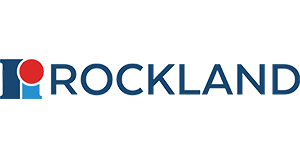DRIP130 Antibody
DRIP130 Antibody
SKU
ROC100-401-239
Packaging Unit
500 µL
Manufacturer
Rockland
Availability:
loading...
Price is loading...
Application Note: Anti-DRIP-130 detects a 130 kDa band by immunoblot analysis using a dilution of 1:1,000. For immunoprecipitation a dilution of 1:100 or 1:200 is suggested; pre-clearing with a non-specific rabbit IgG is helpful to reduce background. Optimal titers for applications should be determined by the researcher. Rockland Immunochemical's anti-DRIP130 has been used to detect DRIP130 using nuclear extracts from mouse thymus, spleen, and brain. Unfortunately, we have not tested reactivity on any cell line extracts. The following standard procedure is recommended: separate 10 micrograms of thymus nuclear extract by 7.5% SDS-PAGE (0.75 to 1 mm thick). Transfer to nitrocellulose without SDS in the transfer buffer (pre-equilibrate the gel in transfer buffer for 30 min prior to transfer). Blocking is performed with 5% non-fat dry milk in TTBS for 1 hr at room temperature. Incubate anti-DRIP130 antibody at a 1:1,000 for 1 hr at room temperature. Dilute Donkey anti-Rabbit IgG-HRP 1:5,000 and react 1 hr at room temperature. A predominant band at ~130 KDa is detected under these conditions. Control or normal rabbit serum fails to recognize the 130 kDa protein.
Concentration Value: 85 mg/mL
ELISA Dilution: 1:5,000 - 1:25,000
Immunoprecipitation Dilution: 1:100 - 1:200
Western Blot Dilution: 1:1,000
General Disclaimer Note: This product is for research use only and is not intended for therapeutic or diagnostic applications. Please contact a technical service representative for more information. All products of animal origin manufactured by Rockland Immunochemicals are derived from starting materials of North American origin. Collection was performed in United States Department of Agriculture (USDA) inspected facilities and all materials have been inspected and certified to be free of disease and suitable for exportation. All properties listed are typical characteristics and are not specifications. All suggestions and data are offered in good faith but without guarantee as conditions and methods of use of our products are beyond our control. All claims must be made within 30 days following the date of delivery. The prospective user must determine the suitability of our materials before adopting them on a commercial scale. Suggested uses of our products are not recommendations to use our products in violation of any patent or as a license under any patent of Rockland Immunochemicals, Inc. If you require a commercial license to use this material and do not have one, then return this material, unopened to: Rockland Inc., P.O. BOX 5199, Limerick, Pennsylvania, USA.
Immunogen: This whole rabbit serum was prepared by repeated immunizations with a synthetic peptide corresponding to mouse DRIP-130 residues 897-916 (based on human DRIP-130 residue numbering) crosslinked to KLH.
Physical State: Lyophilized
Purity and Specificity: This antiserum was processed by delipidation and defibrination and is directed against mouse DRIP130. This reagent can be used to determine the presence of DRIP130 various immunological assays. Cross-reactivity occurs with human DRIP-130. Reactivity with DRIP-130 isolated from other species is unknown.
Background: This antiserum recognizes mouse DRIP-130 (vitamin-D-receptor interacting protein 130), and was tested for use in immunoprecipitation and immunoblotting. DRIP-130 has been described elsewhere as Sur2; CRSP130, ARC130, NAT140, and TRAP150b. DRIP-130 is component of a multi-protein complex termed DRIP that interacts with the vitamin D receptor (VDR); together, the DRIP proteins constitute a new cofactor complex. DRIP binds to several nuclear receptors and mediates ligand-dependent enhancement of transcription by VDR and the thyroid-hormone receptor in cell-free transcription assays. The DRIPs are almost indistinguishable from components of two other cofactor complexes called ARC and TRAP, which are recruited by other types of transcription activators to mediate transactivation on chromatin-assembled templates. Several DRIP/ARC/TRAP subunits are also components of other potentially related cofactors, such as CRSP, NAT, SMCC and the mouse Mediator, indicating that unique classes of activators may share common sets or subsets of cofactors. The role of nuclear-receptor ligands may, in part, be to recruit such a cofactor complex to the receptor and, in doing so, to enhance transcription of target genes. In humans, interaction with Sur-2 is required for transcription to be activated by the activation domain of a transcription factor of the ETS-family in response to activated mitogen-activated protein (MAP) kinase.
Low Endotoxin: No
Other: User Optimized
Concentration Value: 85 mg/mL
ELISA Dilution: 1:5,000 - 1:25,000
Immunoprecipitation Dilution: 1:100 - 1:200
Western Blot Dilution: 1:1,000
General Disclaimer Note: This product is for research use only and is not intended for therapeutic or diagnostic applications. Please contact a technical service representative for more information. All products of animal origin manufactured by Rockland Immunochemicals are derived from starting materials of North American origin. Collection was performed in United States Department of Agriculture (USDA) inspected facilities and all materials have been inspected and certified to be free of disease and suitable for exportation. All properties listed are typical characteristics and are not specifications. All suggestions and data are offered in good faith but without guarantee as conditions and methods of use of our products are beyond our control. All claims must be made within 30 days following the date of delivery. The prospective user must determine the suitability of our materials before adopting them on a commercial scale. Suggested uses of our products are not recommendations to use our products in violation of any patent or as a license under any patent of Rockland Immunochemicals, Inc. If you require a commercial license to use this material and do not have one, then return this material, unopened to: Rockland Inc., P.O. BOX 5199, Limerick, Pennsylvania, USA.
Immunogen: This whole rabbit serum was prepared by repeated immunizations with a synthetic peptide corresponding to mouse DRIP-130 residues 897-916 (based on human DRIP-130 residue numbering) crosslinked to KLH.
Physical State: Lyophilized
Purity and Specificity: This antiserum was processed by delipidation and defibrination and is directed against mouse DRIP130. This reagent can be used to determine the presence of DRIP130 various immunological assays. Cross-reactivity occurs with human DRIP-130. Reactivity with DRIP-130 isolated from other species is unknown.
Background: This antiserum recognizes mouse DRIP-130 (vitamin-D-receptor interacting protein 130), and was tested for use in immunoprecipitation and immunoblotting. DRIP-130 has been described elsewhere as Sur2; CRSP130, ARC130, NAT140, and TRAP150b. DRIP-130 is component of a multi-protein complex termed DRIP that interacts with the vitamin D receptor (VDR); together, the DRIP proteins constitute a new cofactor complex. DRIP binds to several nuclear receptors and mediates ligand-dependent enhancement of transcription by VDR and the thyroid-hormone receptor in cell-free transcription assays. The DRIPs are almost indistinguishable from components of two other cofactor complexes called ARC and TRAP, which are recruited by other types of transcription activators to mediate transactivation on chromatin-assembled templates. Several DRIP/ARC/TRAP subunits are also components of other potentially related cofactors, such as CRSP, NAT, SMCC and the mouse Mediator, indicating that unique classes of activators may share common sets or subsets of cofactors. The role of nuclear-receptor ligands may, in part, be to recruit such a cofactor complex to the receptor and, in doing so, to enhance transcription of target genes. In humans, interaction with Sur-2 is required for transcription to be activated by the activation domain of a transcription factor of the ETS-family in response to activated mitogen-activated protein (MAP) kinase.
Low Endotoxin: No
Other: User Optimized
| SKU | ROC100-401-239 |
|---|---|
| Manufacturer | Rockland |
| Manufacturer SKU | 100-401-239 |
| Package Unit | 500 µL |
| Quantity Unit | STK |
| Reactivity | Human, Mouse (Murine) |
| Clonality | Polyclonal |
| Application | Western Blotting |
| Isotype | Antiserum |
| Human Gene ID | 9439 |
| Host | Rabbit |
| Conjugate | Unconjugated |
| Product information (PDF) | Download |
| MSDS (PDF) |
|

 Deutsch
Deutsch







